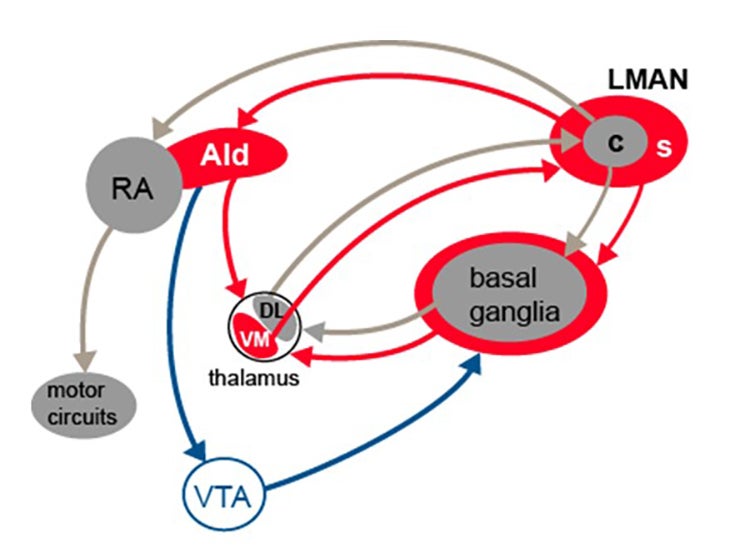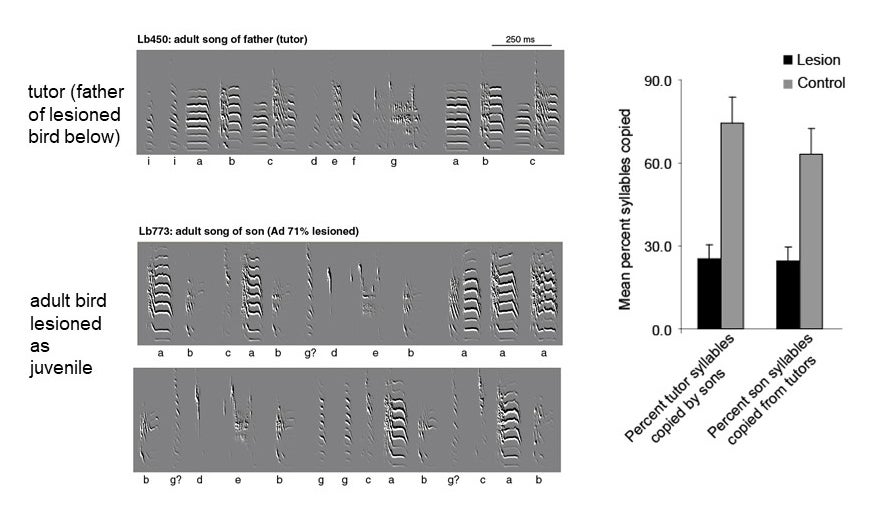The focus of our work is to study specific circuits in young birds as they are actively engaged in skill learning. One discovery we made is that the cortico-basal ganglia circuits that mediate vocal learning during development are organized as parallel pathways – this is a very common motif across vertebrate taxa, and allows for distinct but related functions to be parsed into separate sub circuits.

This image depicts parallel loops in the LMAN→basal ganglia→thalamus→LMAN pathway. We call the gray regions “core” (c) areas and the red regions “shell” areas; these parallel loops are similar to those for sensorimotor and associative functions in mammals, respectively.
The outflow of LMAN-core goes to RA, a region analogous to vocal motor cortex; RA projects directly to vocal motor neurons. In contrast, the outflow of LMAN-shell goes to AId, a region that arcs out from the lateral border of RA. AId makes several connections – a primary one is that it creates a new recurrent circuit by projecting back to the dorsal thalamus where it converges with the basal ganglia loop made by the shell pathway.
We hypothesize that the core pathway is a performance pathway because it drives vocal motor output in juveniles during early skill learning; in contrast, the shell pathway is necessary for comparing and evaluating self-generated sounds to goal tutor sounds. The shell pathway may serve a learning function by helping to compare self-generated behavior to goal behavior – good matches may elicit dopamine release from VTA which helps to gradually strengthen tutor-similar utterances.
Evidence in favor of the role of the shell pathway in vocal learning, but not performance
We lesioned AId as a means of disrupting the shell pathway selectively – both removing AId from the trans-cortical circuit and preventing its convergence with basal ganglia inputs in dorsal thalamus. The results showed that AId lesions in juvenile birds following tutor memorization prevented accurate imitation of their memorized tutor song but did not produce any motor disruption of babbling. The lack of acute performance effects followed by disrupted learning is consistent with the idea that shell circuitry plays an important role in evaluation and refinement of the bird’s own song.
The left panel below shows spectrographs of a tutor song on top and two examples below of his son, who was lesioned as a juvenile following tutor memorization. As an adult, the lesioned bird produced normal sounds, but a very poor copy of the tutor song. The right panel shows the group data for lesioned birds, whose ability to copy their tutor song was greatly impaired relative to that of birds with control lesions. The original report of this paper is here.
